 Weird Stuff
Weird Stuff  Weird Stuff
Weird Stuff  Mysteries
Mysteries 10 Tragic Disappearances and Deaths in Joshua Tree National Park
 History
History 10 Ways Childhood Really Sucked in the Old West
 Music
Music 10 Name Origins of Famous Bands from the 1990s
 Religion
Religion 10 Biggest Turnarounds by the Catholic Church
 Weird Stuff
Weird Stuff 10 Unbelievable Times Laws Had Unintended Consequences
 Humans
Humans Ten Historic Women Who Deserve Way More Credit Than They Got
 Movies and TV
Movies and TV 10 Films That Spawned Major Lawsuits
 History
History Ten Times Towns Were Wiped Off the Face of the Earth
 Creepy
Creepy 10 of the Most Disturbingly Haunted Public Houses in the UK
 Weird Stuff
Weird Stuff 10 Niche Subcultures That Are More Popular Than You Might Think
 Mysteries
Mysteries 10 Tragic Disappearances and Deaths in Joshua Tree National Park
 History
History 10 Ways Childhood Really Sucked in the Old West
Who's Behind Listverse?

Jamie Frater
Head Editor
Jamie founded Listverse due to an insatiable desire to share fascinating, obscure, and bizarre facts. He has been a guest speaker on numerous national radio and television stations and is a five time published author.
More About Us Music
Music 10 Name Origins of Famous Bands from the 1990s
 Religion
Religion 10 Biggest Turnarounds by the Catholic Church
 Weird Stuff
Weird Stuff 10 Unbelievable Times Laws Had Unintended Consequences
 Humans
Humans Ten Historic Women Who Deserve Way More Credit Than They Got
 Movies and TV
Movies and TV 10 Films That Spawned Major Lawsuits
 History
History Ten Times Towns Were Wiped Off the Face of the Earth
 Creepy
Creepy 10 of the Most Disturbingly Haunted Public Houses in the UK
10 Post-Human Entities Who Could Inherit The Earth
Homo sapiens sapiens has had a pretty good run for a species confident enough to name ourselves the “wise, wise guys.” But we are reaching a point when we may sooner or later have to pass the mantle onto something else, maybe even something we create. Here are 10 possibilities.
10Uplifted Animals

The idea of raising animal species to human intelligence is an old one that dates back to H.G. Wells’s The Island of Dr Moreau. Cordwainer Smith imagined uplifted animals as an oppressed underclass fighting for their rights, while David Brin’s Uplift series presented a universe where almost all intelligent creatures owed their sapiency to patron species, with humanity exploring the universe with intelligent apes and dolphins at its side.
Some theorists, such as George Dvorsky, argue that we have a moral imperative to raise other species to our level of intelligence once we possess the technological means to do so. Dvorsky points to modern efforts to have great apes be granted the legal right of “personhood,” and he asserts that the natural next step would be to give non-human animals the cognitive faculties for self-determination and participation in a society of sentient creatures. The human monopoly on sentient thought gives us an unfair and unjust advantage over our animal neighbors, and if the means exist to allow non-humans like apes, dolphins, and elephants to achieve the cognitive means of political participation, it is our moral duty to extend it to them.
Others disagree. Alex Knapp believes that the costs in terms of animal life would be too high to justify it. In order to uplift a species, it would be necessary to make changes to the DNA on an embryonic level, leading to inevitable failed attempts before we got it right. Then there is the question of how to ensure that a successfully uplifted embryo would be gestated. Such experimentation would be morally wrong, with the potential for intelligent animals suffering physical abnormalities and early death due to human meddling. Even if successful, human beings would have no way to cope with the social and emotional needs a sapient chimpanzee, bonobo, or parrot would have. In other words, uplifted animals could be left emotionally traumatized due to ham-handed attempts by humans to raise them.
Some also worry that problematic aspects of certain species’ natures, such as chimpanzees’ violence and dolphins’ inclination for rape, would carry on into their intelligent forms. Some argue that intelligent self-awareness is an ecological niche that can only sustainably hold a single species, explaining why the Neanderthals and our other human cousins were wiped out and assimilated. Creating intelligent animals could create evolutionary competition for humanity by potentially traumatized creatures with mental processes and value systems that we may not even be able to comprehend.
9The Borg
 Star Trek introduced an assimilationist cyborg race seeking to bring all sentient species of the universe into a single collective intelligence. Most would argue that this would be a bad thing, but not everyone agrees. Travis James Leland argued that the emotionless, sterile picture of the Borg is just Luddite propaganda, and a step toward collective intelligence could just as likely lead to happiness and freedom for individuals within the hive. Indeed, one of the reasons we connect through the Internet and social media is to become closer and more connected as a species, which is surely a step toward a collective.
Star Trek introduced an assimilationist cyborg race seeking to bring all sentient species of the universe into a single collective intelligence. Most would argue that this would be a bad thing, but not everyone agrees. Travis James Leland argued that the emotionless, sterile picture of the Borg is just Luddite propaganda, and a step toward collective intelligence could just as likely lead to happiness and freedom for individuals within the hive. Indeed, one of the reasons we connect through the Internet and social media is to become closer and more connected as a species, which is surely a step toward a collective.
Integration with technology and interconnection doesn’t reduce individuality; it merely makes it easier to connect and express our individuality in a nascent global collective consciousness. Some argue that the technology to create a “telepathic noosphere” could be created with technology available today. We are already able to send video, audio, and motor control information between the brain and the Internet through electrodes, and the information bandwidth required for a hive mind is theoretically possible as well. The technological infrastructure used for modern telecommunications and wireless Internet could be further developed for neural interfacing, though initially it would be of extremely low fidelity and difficult to use. Some refer to these theoretical hive minds as “borganisms” and advocate their creation for social and political reasons.
There could very well be advantages to a hive mind consciousness, insofar as it would essentially become a superhuman entity capable of achievements beyond the scope of individuals. The ability to coordinate for mass projects would be enhanced, planning for complex goals would be more efficient, and human beings would grow closer to understanding one another.
Of course, there are a number of downsides as well. Along with the existential fear of the loss of individual identity to the mass consciousness, there are threats of viruses and hackers in the system in early stages, not to mention worries over who exactly will control the technology: An emergent hive mind from social media is a different beast than a hive mind of soldiers and secret police developed by the military-industrial complex. Some argue that more developed borganisms would have even more weaknesses, such as a susceptibility to virulent memetic infection (which would require individual units to practice rigorous “mental hygiene”), as well as the potential for group-think and the problem of how to deal with selfishness and social parasitism from individuals within the hive.
8Genetic Castes

Political scientist Francis Fukuyama believes that transhumanism is one of the most dangerous ideas around today. He sees a fundamentally dangerous aspect of attempting to improve on our basic humanness. He calls it “Factor X” and says that it “cannot be reduced to the possession of moral choice, or reason, or language, or sociability, or sentience, or emotions, or consciousness or any other quality that has been put forth as a ground for human dignity. It is all those qualities coming together in a human whole that make up Factor X.”
He believes that the development of genetically modified humans would spell an end to the liberal ideal of political equality of all people. Access to genetic modification technology could lead to the rise of genetic castes and erode our common humanity, as the wealthy would be able to create designer babies with significant advantages over the less genetically fortunate masses. Fukuyama is a conservative, but many on the left have similar fears. The Center for Genetics and Society is a leftist bio-Luddite lobbying group formed in the late 1990s to raise concerns about “technoeugenics” leading to a divide between the “GenRich” and the “GenPoor.”
Some argue that the complexity of genetic modification and cultural aversion to experimenting on children would make this scenario unlikely. Others say that even if it did come to pass, it wouldn’t necessarily translate into political inequality, as political rights are not based on physical traits. However, still others argue that parents should have the right to select advantageous physical and intellectual traits for their children based on reproductive rights and the natural duty of parents to do what is right for their children. This could include selecting for IQ, height, gender, and even skin color.
The science of designer babies already exists in pre-implantation genetic diagnosis and in vitro fertilization, which enjoy widespread support for safeguarding against genetic diseases. Some fear that banning the technology over fears of genetic castes might exacerbate the problem, as the wealthy will still be able to go to a country without a ban on designer babies.
7Gray Goo
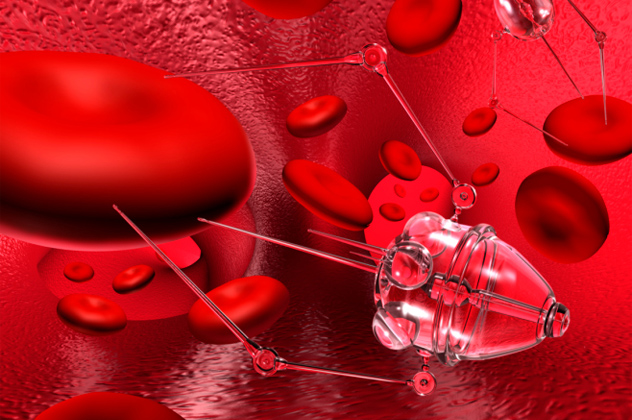
In 1986, engineer Eric Drexler raised fears of a nanotechnological insurrection against the human race. While he detailed the many potential benefits of nanotechnology, such as destroying cancer cells and repairing DNA, he also expressed concerns that molecule-sized, self-replicating robots could begin to out-compete natural plants and microorganisms, taking over every ecological niche and eventually consuming all of Earth’s resources: the so-called “gray goo” scenario, also known as “global ecophagy.”
Concern over the predictions led to Prey by Michael Crichton and an agitated Prince Charles convening a “nanotech summit” at his country estate in Gloucestershire. Nanotechnologists such as Richard Smalley responded by saying that the “molecular manufacturing” needed to create these nanobots was scientifically impossible. In order to manipulate atoms (which are sensitive to the electronic bonds of surrounding atoms), molecular assemblers would need additional manipulator “fingers,” but there wouldn’t be enough room at the atomic level. This is known as the “fat fingers” problem. There is also the “sticker fingers” problem: The atoms being moved around by the manipulators would get stuck to them with no feasible way to unstick them. Drexler responded by saying that Smalley’s incredulous attitude toward molecular manipulators came down to a desire to reduce public fears and protect funding for nanotechnology research.
One solution to the threat of gray goo is another form of nanotechnology that would perform a beneficial role: blue goo. These would be self-replicating police nanobots designed as a defense against autonomous and misbehaving gray goo. However, they would also need to be omnipresent, strong, robust, resistant to the gray goo’s effects, and completely under human control. If the blue goo was subverted or overpowered by the gray goo, however, it could very well end up turning against us as well.
Other potential limits on the spread of gray goo include limited replication capacity, wide dispersal, energy and chemical element requirements, or the use of rare elements such as titanium or diamond in constructing molecular assemblers. As the human body contains very little of these rare elements, the goo wouldn’t likely turn on us, although they may eat our smartphones. If these fail-safes didn’t work, however, the end result could be a post-human, post-ecological world of (potentially competing) nanobot swarms.
6Artificial Intelligence

Artificial intelligence is the sub-field of computer science devoted to creating machines able to perform tasks associated with human intelligence. There are two forms of theoretical AI: narrow, soft, or weak AI, and general, or strong AI. Soft AI is inspired by the human brain but doesn’t seek to mimic it—it’s a statistically oriented computer intelligence able to sort through vast reams of data with algorithms to perform tasks like playing chess, answering Jeopardy questions, taking reservations, and giving GPS directions. The tasks these AIs perform are achieved in ways bearing little resemblance to human thinking patterns.
Strong AI is designed to mimic human intelligence in reasoning, planning, learning, vision, and natural language conversations. Proponents for strong AI hope to achieve singularity, a point in which machine intelligence matches and exceeds human intelligence, after which technological progress will rapidly accelerate and we will be unable to predict or even comprehend the future development of civilization.
Entrepreneur Elon Musk is vocal about the risks of artificial intelligence: “In the movie Terminator, they didn’t create A.I. to—they didn’t expect, you know some sort of Terminator-like outcome. It is sort of like the Monty Python thing: Nobody expects the Spanish inquisition. It’s just—you know, but you have to be careful.” He’s far from alone. Bill Gates has expressed concern, and even Stephen Hawking sees reasons to be worried: “The primitive forms of artificial intelligence we already have, have proved very useful. But I think the development of full artificial intelligence could spell the end of the human race. Once humans develop artificial intelligence it would take off on its own and redesign itself at an ever-increasing rate. Humans, who are limited by slow biological evolution, couldn’t compete and would be superseded.”
Many scientists dismiss these fears as overblown and believe that the development of machine intelligence will be complementary to humanity rather than replacing it outright.
5Wireheads
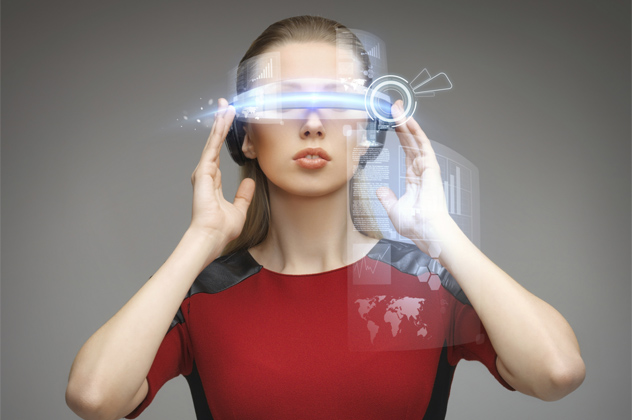
A wirehead is a science fiction concept for an individual who stimulates the pleasure center of the brain with electric current, particularly one addicted to the activity. The concept first appeared in Larry Niven’s Known Space series in the 1970s but was a common theme in cyberpunk fiction. These ideas likely sprang from experiments in the 1950s when James Olds placed electrodes in the mesolimbic dopamine pathways of rats. The rats would ignore food and sleep in lieu of self-administering bursts of instant pleasure until they died of starvation. Olds repeated the same experiments on other animals and humans, with the latter referring to the experience as “orgasmic.”
There are some who believe that the adoption of this technology could help with the elimination of suffering from the human experience without harming others or damaging the environment. This is the dream of the so-called Abolitionist project, which seeks to combine wireheading, designer drugs, and genetic engineering to create the perfect society. However, mere orgasmic happiness would likely lead to global extinction given the track record, so it would have to be modified. A wearable technology known as Thync allows you to alter your mood and state of mind for calm or energy—without the side effects or addiction of pharmaceuticals. The technology is based on transcranial direct-current stimulation, or tDCS, a low-cost way of sending electric current to the brain to improve intelligence, learning, vigilance, and memory. It’s also supposed to help with chronic pain and the symptoms of depression, fibromyalgia, Parkinson’s, and schizophrenia.
However, some futurists have raised fears of another form of mind-altering technology: Transcranial Magnetic Stimulation. This technology can be used to stimulate psychopathy by temporarily turning off that part of the amygdala which processes fear, giving the confidence of alcohol intoxication without the loss of clarity. The fear is that meddling with the human brain may create a future where humans are not only able to adjust their mood at will, but also able to turn off their capacity for fear and empathy when convenient. While these beings may or may not be genetically identical to modern humans, their emotional and social worlds may very well become utterly alien.
4Infomorphs
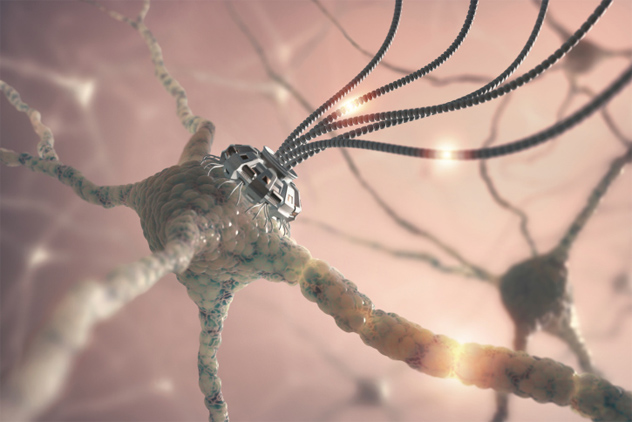
In 1991, Charles Platt published The Silicon Mind, a book about a quest for immortality involving copying human minds onto computers, which created entities called “infomorphs.” In 1996, Russian artificial intelligence theorist Alexander Chislenko borrowed the name to describe a theoretical entity based on distributed intelligence. These networked intelligences would be able to share knowledge and experiences much more readily than we can, leading to massive changes in the concepts of identity and personality, much like the hive consciousness discussed earlier.
Not limited by physical bodies, these entities would find many human notions alien and irrelevant, perhaps even quaint. The term is also used to describe the process of uploading human minds onto computers to create backups of the human brain. This is described as transferring a person’s mental structure from a biological matrix to an electronic or informational one. The advantages of uploading one’s mind include greater economic growth, the ability to reprogram ourselves for greater intelligence or happiness, reduced impact on the environment, and liberation from the laws of physics and the inevitability of personal death.
There are many potential issues with mind uploading as a means of transcending the bounds of our human form. Technical arguments against it include the belief that it would be impossible to replicate the unpredictable and nonlinear interactions between brain cells that constitutes human intelligence, not to mention the fact that we still don’t understand how consciousness exists at all. There are also ethical problems in developing the technology. For example, we would never be able to tell if it really worked: How can we know whether uploaded minds are truly conscious, or just mimicked copies behaving like an individual with no real internal mental state?. The threat of abuse and manipulation of infomorphs is also a major concern.
3Transgenic Humans
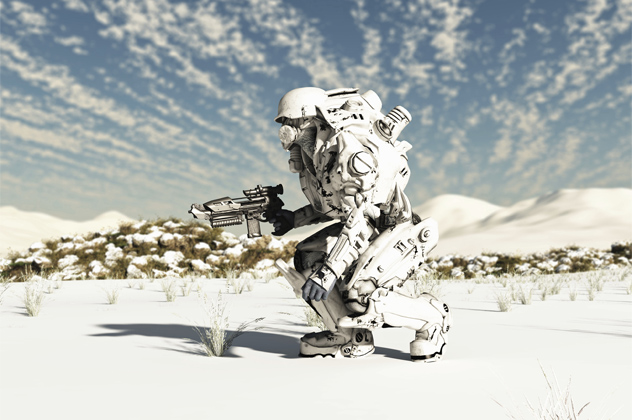
Transgenic animals have a foreign gene deliberately inserted into their genome. This technology has been used to create glow-in-the-dark mice as well as Glofish, fish which have been genetically altered with luminescent colors. The technology has been used in attempts to revive the woolly mammoth, and there are debates over whether to use transgenic primates to study the human condition. There is also the prospect of transgenic humans, who would benefit from genetic advantages borrowed from other animal species.
Producing transgenic humans would require a number of steps. A suitable transgene would need to be isolated and promoted to express in the right way at the right time, then placed inside a human cell grown in tissue culture. A nucleus from the transgenic human cell would need to be placed in an enucleated egg cell, then allowed to grow and divide. The now-developing embryo would be placed into a womb to come to term. The technologies needed to achieve all these steps are already available, and human and non-human genes have already been mixed through byproducts of in vitro and stem cell research.
Some argue that the use of transgenes to modify humans can open up abilities conferred by nature onto other animal species, like sonar, acute senses, and the ability to photosynthesize or produce our own essential nutrients. The potential value would be greater than any concerns regarding human dignity, which is tied to our ability to reason rather than our genetic integrity. We could borrow genes from chimps to increase the efficiency of our muscles and performance on memorization tasks and strategic planning.
But the implications are equally scary. Some people are concerned by the possibility of the use of “harvest transhumans“—people bred and raised with the intention of being used for medical experiments related to transgenes. There is also the fear known as “species anxiety,” which has led to laws in Canada and parts of the United States banning the creation of multi-species chimeras. But science marches on, and in 100 years, the world could be full of humans with a touch of chimp, bat, octopus, or mouse.
2Cyborgs
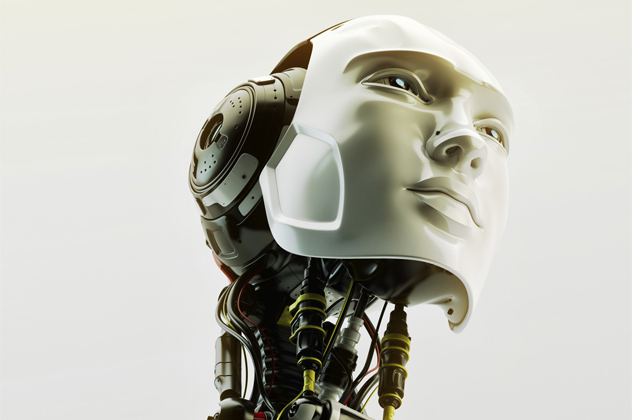
The word “cyborg” was first used in a 1960 article by Manfred Clynes and Nathan S. Kline. They were speculating on ways to enhance unconscious self-regulatory control functions through chemical or electronic means in order to permit humans to better survive across varied environmental conditions, with the ultimate goal of making humans better able to explore the cosmos. They wrote: “If man in space, in addition to flying his vehicle, must continuously be checking on things and making adjustments merely in order to keep himself alive, he becomes a slave to the machine. The purpose of the Cyborg, as well as his own homeostatic systems, is to provide an organizational system in which such robot-like problems are taken care of automatically and unconsciously, leaving man free to explore, to create, to think, and to feel.”
The nomenclature was later applied to medical patients dependent on prosthetics and implants and is used culturally as a metaphor to describe our ever-increasing dependence on technology. Recent explorations into practical cybernetics have included bionic arms, a way of connecting the nerve system with computers via electrodes, a prosthetic eye camera, and a very literal “thumb drive.”
In 2015, Professor Yuval Noah Harari from the Hebrew University of Jerusalem predicted that, within 200 years, human beings will become godlike cyborgs due to our need to upgrade ourselves. Zoltan Istvan, founder of the Transhumanist Politic Party, promotes a platform of heavy government spending on the development of artificial hearts and cranial implants designed to alert health authorities to a crisis and reduce crime rates. Meanwhile, the US military’s research wing DARPA has announced the creation of a Biological Technologies Office (BTO) to “explore the increasingly dynamic intersection of biology and the physical sciences.” They hope to develop technologies for future soldiers, including advanced prosthetics featuring mind-controlled limbs and neural interfaces, as well as cybernetic solutions to blood loss and PTSD.
Another DARPA initiative with the potential for civilian application (or horror) is the development of artificial chromosomes. They envision future soldiers who don’t need sleep, require minimal sustenance, and have infrared vision. A name for a future merger of man and machine has been proposed: Homo electricus.
1Multiple Human Species
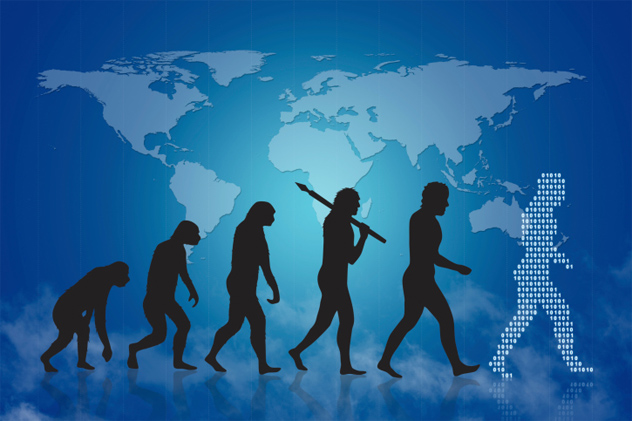
Speciation is a process by which multiple new species arise from a common ancestral species. The concept was first explored in fiction by Olaf Stapleton in his 1930 book Last and First Men, which explored the rise and fall of 18 distinct human species over the next two billion years and our eventual migration from Earth to Venus. More recently, Douglas Dixon’s Man After Man: An Anthropology of the Future explored the same concept, in which civilization collapses after 200 years of genetic engineering. Some of humanity escapes into space, only to return a few million years later to discover that man has branched off and evolved into a myriad of (usually non-sentient) forms in the interim.
If human evolution continues, it is possible that there could be multiple human species in millions of years, though many believe it is unlikely. A 2009 study by Yale University found evidence that ovulatory characteristics mean that shorter, stouter women have more children, meaning that natural selection is beginning to select for these physical traits. Meanwhile, evolutionary psychologist Geoffrey Miller believes that human evolution will speed up due to modern society being better equipped at sexual selection, as well as the rise of genetic engineering.
We’ve talked about possible next steps in human evolution before. Cadell Last, a doctoral student in evolutionary anthropology and a researcher at the Global Brain Institute, believes that we may be on the cusp of a new great evolutionary transition, with technology driving us to become a longer-lived species with delayed reproduction and a heavier influence on cultural activities. Speciation into multiple human species is unlikely to happen, because human society is both too widespread and too integrated. Historically, there has been no evidence of an isolated group of humans going through the Galapagos scenario of speciation.
However, if humanity expands to other planets and star systems, the potential for the rise of new human species adapted to different conditions increases, though they will hardly inherit the Earth, unless they come back four million years later with an armada. Which, of course, they would.








